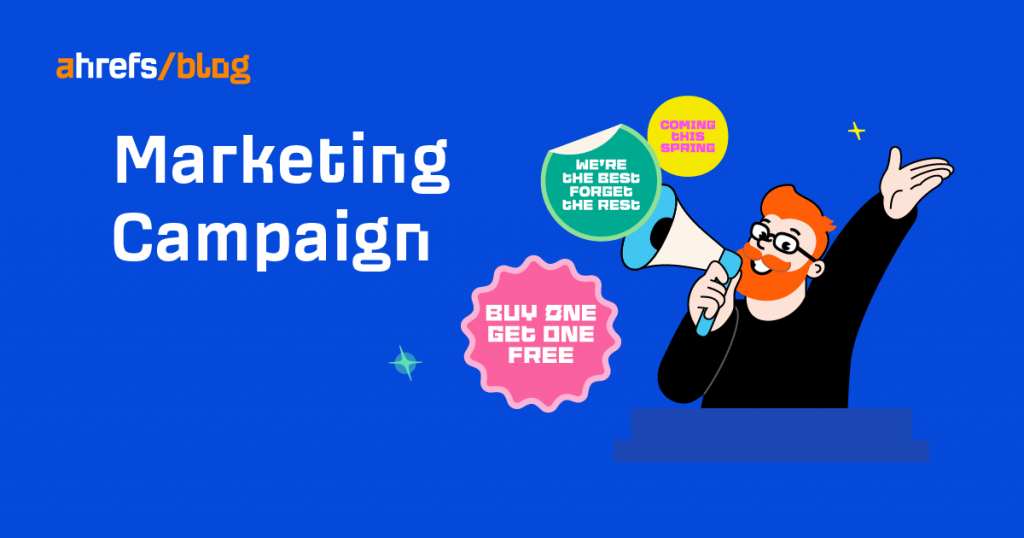[ad_1]
A marketing campaign is a series of organized, strategized efforts used to achieve a marketing goal.
Planning a campaign instead of firing ad hoc messages at your audience helps you improve performance and better control the outcomes of your marketing efforts. That’s why it’s worth knowing these eight types of marketing campaigns used successfully by big and small brands alike:
Product marketing campaigns are used by companies to introduce a product (or a product feature) into the market.
They are one of the most important and complex campaigns in the life cycle of a product. This is because a newly introduced product (or service) needs effective marketing communication to impact sales. It also requires cooperation between different departments to make sure every part of the user experience is covered.
This kind of campaign should stem from your go-to market strategy.
But besides the typical process of bringing a product to the market, there are also agile methods often used by startups, such as a minimum viable product (MVP).
Example
Product launch campaigns tend to be costly and bloated with all kinds of tactics and channels that big money can buy. But that doesn’t mean you have to dedicate $200M to a product launch of Windows 95 proportions.
While the marketing communication aspect is important when launching a product, what matters most is how well your product fits the market. To achieve product-market fit, you don’t need to operate on a colossal budget or have 20 years of experience in the field.
Among many inspirational product-market fit case studies, there’s one that stands out: Buffer. Its product marketing campaign was designed to verify the value hypothesis of its MVP. It didn’t even have to build a product to achieve that.
To verify its MVP, Buffer used a landing page that explained the soon-to-be product and collected emails for a waiting list. Afterward, it used the waiting list to gather feedback on what features to build.

Sales promotion campaigns are short-term initiatives used to stimulate demand for a product or service.
Most often, the goal of a sales promotion campaign is to increase sales. Think flash sales, limited-time offers, coupons, etc. The idea is to decrease the friction of making a purchase (price, shipping costs, etc.) and speed up the decision process by creating a sense of urgency.
As temporary discounts often bring fast results, it may be tempting for marketers to use these campaigns on many occasions. This is especially when the company doesn’t meet its sales quota. Yet running these campaigns too often has its downsides. Namely, discounts can devalue a brand and make it harder to sell products/services at regular prices in the future.
An alternative to offering discounts is increasing the value of a product. For example, you can add more products to make a bundle, offer some freebies, or provide free shipping.
Example
Toyotathon is Toyota’s annual sales event (since 1969). It takes place in the U.S. at the end of each year.
https://www.youtube.com/watch?v=_41DogSxlAA
It’s a really big event. In December 2020, “toyotathon” was searched for an estimated 35K times in Google. That month, Toyota sold 211,378 vehicles (about 11.5% of its total annual sales).
Car manufacturers and dealers hold these kinds of events because when the current year passes, that year’s car stock becomes less valuable (customers prefer newer models). So they try to sell as many cars as possible before the cars lose their value.
As I’ve already mentioned, discounts can undermine the perceived value of the brand and, in this case, the cars. To solve this problem, Toyota has created a brand for discounted cars. That way, customers are not just buying a discounted Toyota. They’re taking part in a Toyotathon. This is a win-win for all parties.
Sidenote.
These types of regular sales promotions (including Black Friday and Cyber Monday) can block sales for months, as many people will simply wait for the event to come.
Brand awareness campaigns highlight the brand and what it stands for to improve its recognizability among the target audience.
Essentially, brand awareness campaigns are more subtle, often indirect ways that impact sales. So instead of offering discounts, marketers will remind their audience that their brand is climate-neutral, designed for people who aren’t afraid to “think different,” etc.

Price is not the only factor that motivates consumer behavior. Sometimes, we buy things because they make us feel good. Or maybe it’s because a company shares our values. Or perhaps the product makes us feel like we joined an elite club. Other times, it’s an emotion we just can’t explain.
Brands are these emotional and cognitive triggers that are used to evoke those various purchase factors. And the more consumers are aware of a given brand, the more likely they are to recall it when shopping.
Another thing about building brand awareness is it works best when it’s a systematic effort. The cost of “forgetting” a brand can be high. But there are ways to save a brand from oblivion even when the timing isn’t ideal for consumers to make a purchase.
Example
Nobody promotes cold drinks in the cold season better than Coca-Cola. The Coca-Cola Santa, the truck, the polar bears—these are the brand codes consumers have been exposed to for decades.

There is even a dedicated page on the brand’s website that answers the question: “Did Coca-Cola create Santa Claus?” Amazingly enough, this page gets an estimated 900 monthly organic visits in the U.S. alone.
During those multimillion-dollar campaigns, Coca-Cola doesn’t do hard selling. Instead, it tries to find its way to our tables by introducing its brand.
With the Christmas campaigns, Coca-Cola tries to create a mental association between the brand and the Christmas season. Let’s oversimplify it a bit: If Coke can be associated with Christmas, it can be associated with the emotions this holiday evokes.
And those typically are the joy, warmth, and safety of a community. These emotions are important parts of Coca-Cola’s brand positioning.
SEO campaigns are a course of coordinated actions to improve the search engine ranking of a website.
By improving the search engine ranking, your website can get to the first page of the search engine results page (SERP) and take advantage of the organic traffic potential (and that’s over 99% of searchers’ clicks, according to this study).
To illustrate, ranking number #1 for the keyword “backlink checker” and related keywords (like “check backlinks” or “free backlinks checker”) can drive an estimated 14K visits monthly from organic search alone.
Because search engines like Google use many ranking factors, SEO campaigns can target one or multiple factors to achieve their goal.
Here are some of the known ranking factors:
- Backlinks
- Search intent
- Topical authority
- Page speed
Example
An example of an SEO campaign goal is building links. Links (aka backlinks) are one of the most important ranking factors for search engines like Google. That’s why building links can improve your rankings on the SERPs. And the higher you rank, the more organic traffic you get (generally).
Plus, you can use your links to pass link equity to other pages. SEOs call it the middleman method.
In 2020, Ahrefs ran such a campaign. We created a list of 63 SEO statistics by featuring “link worthy” statistics and then asked other site owners to link to our article.
Once the article was ready, we sent 515 emails and got 36 backlinks from 32 websites. On top of that, our curated list of statistics ranks #1 for “seo statistics” in the U.S. and remains in the top five for related keywords.

We explain the whole process of this SEO link building campaign in this three-part video:
https://www.youtube.com/watch?v=eTF6OBwidhc
Email marketing campaigns are simply marketing campaigns that are disseminated through the email channel.
This type of campaign is often used for the following:
- User onboarding
- Generating traffic
- Lead nurturing
- Sales promotion
- Newsletters
- Cart abandonment (example shown below)
The great thing about email marketing is it uses an owned marketing channel to communicate with a “qualified” audience (i.e., people who know your brand and gave permission for direct communication).
Another great thing about email marketing is you can fully automate it by creating workflows that are automatically engaged (or stopped) based on specified triggers. For example, clicking a link in the email or putting together a list of clients who abandoned their carts. So an email workflow can look something like this:

Example
Cart abandonment emails can help regain 8% of abandoned carts and drive 4% more sales.
Tuft & Needle, a bed products brand, shows us how to do a cart abandonment campaign without being too salesy. It sends a three-part email campaign to shoppers who have put products into their cart but left without buying.
The first email empathizes with the customer on the problem of buying the right mattress. The company knows that “mattress shopping sucks” and that it’s OK to take even a few weeks to decide—but not without reading “The 12 answers to your top fears of buying a mattress online” first.

The second email highlights the company’s “value for money” mattresses and introduces an innovative mattress foam. Next, it invites customers to another landing page where it compares Tuft & Needle to other companies.

Finally, in the third email, Tuft & Needle reassures that if the customer doesn’t like the mattress during the first 100 nights, the company will pick it up and reimburse the customer.
Surely, there isn’t much more you can do to win a customer back. If a customer gets “cold feet” in the buying process, there must have been some objections. And if you address those objections and provide reassurance that the purchase is truly risk-free, that may be enough to get that customer back on the purchase path.
While we’re at it, here’s a word of caution for offering discounts in cart abandonment emails. Follow Tuft & Needles’ example and don’t offer discounts at this point, as this may quickly backfire. Imagine your customers discovering this way of getting discounts and abandoning carts on purpose.
Just like with email campaigns, what sets social media campaigns apart from other types is that they employ social media platforms to reach the target audience.
Also like email marketing, social media allows you to interact directly with an audience who follows your brand. But unlike email, messages on social media can spread quickly beyond your followers to reach a huge audience organically. (Note: Organic reach has been decreasing over the years, especially on Facebook and Instagram.)
What’s more, you can (and often should) amplify your message with paid advertising on social media. To do that, you can take advantage of targeting based on many factors, such as location, age, or interest.
Social media offers many possibilities, making it a great fit for different kinds of goals, including:
- Generating traffic.
- Building a community.
- Building brand awareness.
- Generating revenue.
- Encouraging user-generated content.
Example
Apple started its Instagram account in 2017 with the #shotoniphone campaign. In this campaign (still ongoing), the company has been posting quality photos and videos taken on iPhones. It’s a great way to promote those crucial selling points of its products.
Additionally, Apple encourages Instagram users to share their iPhone-made photography under the same hashtag.

Launching this campaign, which centers on user-generated content, has engaged iPhone users, given the campaign additional organic reach on Instagram, and given Apple a…
[ad_2]


